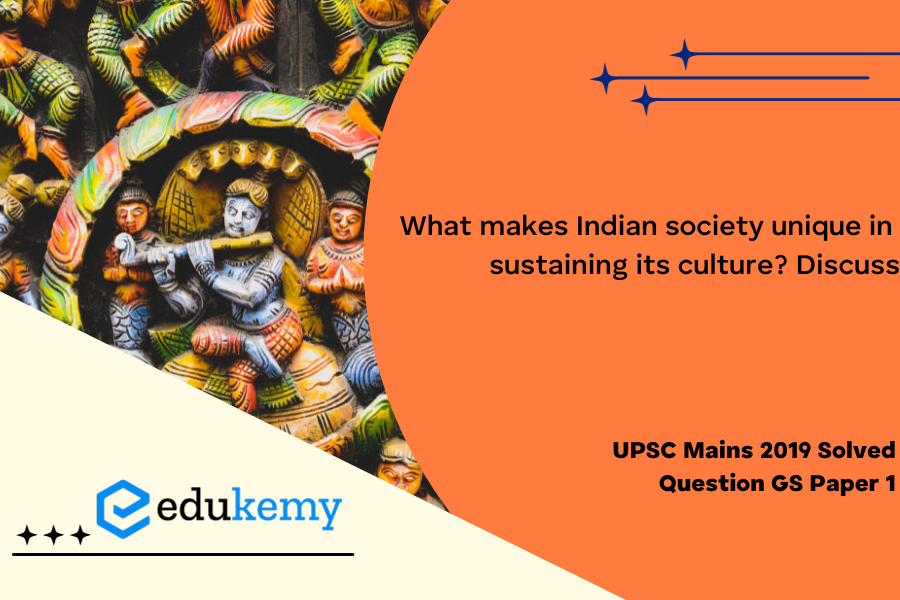Indian society stands as a captivating tapestry woven with diverse threads of tradition, spirituality, and social intricacies, making it truly unique in sustaining its rich cultural heritage. At the heart of this uniqueness lies the seamless fusion of ancient traditions with the demands of a modern world. India’s cultural resilience is rooted in its ability to embrace change while preserving age-old customs. The concept of ‘unity in diversity’ encapsulates the coexistence of myriad languages, religions, and customs within the vast subcontinent. Moreover, the deeply ingrained sense of community and familial bonds plays a pivotal role in upholding traditions, with rituals and festivals serving as vibrant expressions of cultural continuity. The intricate dance between tradition and adaptation in India creates a dynamic cultural landscape, where the past and present coalesce, fostering a society that gracefully navigates the currents of time while cherishing its cultural identity.
Tag: Society of India- Diversity and culture.
Contents
Decoding the Question:
- In the Introduction, try to briefly write about the spirit of Indian Society.
- In Body,
- Write how Indian society is unique in preserving its culture and not affected by homogenization.
- In Conclusion, try to write about some challenges and the way forward.
Answer:
India is a nation of great cultural diversity i.e., there are many different types of social groups and communities living here. These are communities defined by cultural markers such as language, religion, sect, race, caste, food habits, dress patterns, etc. The notion of accommodation and assimilation has been the key feature of Indian society. Since ancient times, India has accommodated different elements of society without letting them lose their separate identities Jawahar Lal Nehru writes in The Discovery of India-Indian Society and Culture “is like some ancient palimpsest on which layer upon layer of thought and reverie had been inscribed, and yet no succeeding layer had completely hidden or erased what had been written previously”.
Indian Society is Unique in Preserving Its Culture:
A Cosmic Vision: The framework of Indian culture places human beings in the center of the universe, as a divine creation-which celebrates Individuality and differences of opinion in the society.
Sense of Harmony: Indian philosophy and culture tries to achieve innate harmony and order in society.
Tolerance: In India, tolerance and liberalism are found for all religions, castes, communities, etc. Indian society accepted and respected Shaka, Huna, Scythians, Muslims, Christians, Jews, and Zoroastrians. Rulers like Ashoka and Akbar have patronized various religions and ensured that there is a peaceful co-existence of religions.
Constitutional and legal provisions: The Indian Constitution has some provisions for the protection of minorities and cultural diversities.
- Article 51 aims to promote harmony and the spirit of common brotherhood amongst all the people.
- Article 29 of the Constitution states the protection of interests for minorities. Article 30(1) gives a provision to the minority communities to establish and administer an educational institute of their choice for the protection of their culture and heritage.
- Several government initiatives to promote the oneness of Indian society as well as encourage multiple cultures. For example: Ek Bharat Shreshtha Bharat etc.
- Several laws protect traditional laws of local communities like the Forest Rights Act etc.

Regional language: The Eighth Schedule of the Indian Constitution provides legal status to 22 languages and accordingly state and central governments donate funding to promote these languages. In India, unlike Western countries, no language is anglicized. With unification and without losing diversity India has created a unique example in preserving its culture.
Continuity and Stability: The light of ancient Indian culture life is yet glowing. Many invasions occurred, many rulers changed, and many laws were passed but even today, the traditional institutions, religion, epics, literature, philosophy, traditions, etc. are alive.
Adaptability: Adaptability is the process of changing according to time, place, and period. Indian society has shown fluidity and has adjusted itself to changing times.
Unity in diversity: Despite inherent differences Indian society celebrates unity in diversity which is reflected in modern India’s founding principles and constitutional ideals.
Challenges in Preserving Culture:
- With the growth of urbanization, industrialization, and globalization, people are moving away from traditional cultural values toward materialistic and individualistic culture.
- Religion, class, and caste-based discrimination are still frequent in the society. It can be seen in the forms of slums, gated communities, manual scavenging, etc.
- The ethnic, religious, and region-based violence is still prevalent in the country. For example: Muzaffar Nagar riots, etc.
- With the growth of modern art forms and the English language, some of the famous art forms and languages are on the verge of extinction. E.g. – Extinct languages in the Himalayan belt are Ahom, Andro, etc.
In recent times, Indian society has seen a surge in multiple divisive issues like communalism, casteism, economic disparity, and ethnic violence, which pose a serious challenge to the time-tested ethos of our society.
Despite this, India remains a diverse country, a bewildering mosaic of communities of all kinds; our peculiar societal genius is to fashion a form of coexistence where diversity can flourish and find its place. The principle of Sarva Dharma Sambhava (equal respect for all religions) is rooted in India’s tradition and culture.
In case you still have your doubts, contact us on 9811333901.
For UPSC Prelims Resources, Click here
For Daily Updates and Study Material:
Join our Telegram Channel – Edukemy for IAS
- 1. Learn through Videos – here
- 2. Be Exam Ready by Practicing Daily MCQs – here
- 3. Daily Newsletter – Get all your Current Affairs Covered – here
- 4. Mains Answer Writing Practice – here


